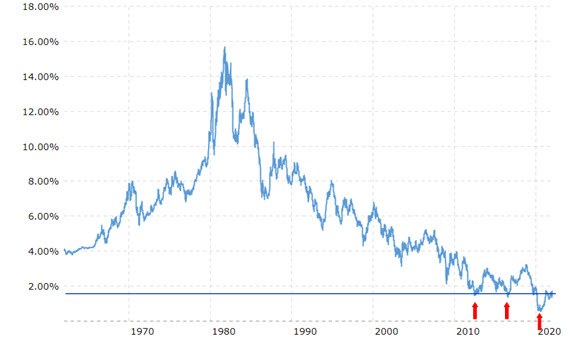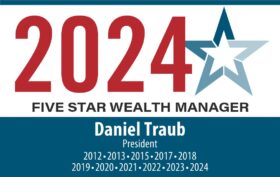The fourth quarter of 2021 and 2021 as a whole were good times to be a stock investor. The broad market, as measured by the S&P 500, gained 11% for the quarter and more than 28% for the year.
Like most of the last decade, the S&P 500 was among the best performing asset classes. Compare its returns to some other important benchmarks:
Asset Class 4Q Return 2021 Return
Small Cap Stocks 2.1% 14.8%
International Stocks 2.7% 11.3%
Technology Stocks 4.6% 15.1%
S&P 500 11.0% 28.7%
Two thousand twenty-one was not as good for bond investors. The BarCap Aggregate Bond Index was flat for the fourth quarter and down 1.5% for the year.
Increasingly, bond investors have had to look beyond plain vanilla bonds (i.e. BarCap Index) to generate positive returns. This is exactly what Tempo has done (see 4th quarter performance below).
I sometimes get vexed when I hear the headlines or listen to public opinion polls.
THE HEADLINES
Last week the Bureau of Labor Statistics announced that the U.S. economy added 199,000 new jobs. Nearly every headline I read bemoaned this as a horrible performance given it was half the 400,000 new jobs that had been predicted.
The economy must be in horrible shape, right?
At the same time, droves of employees have been voluntarily leaving the work force (the so-called “Great Resignation”). People don’t leave their jobs if they are worried about the economy or finding their next one.
The important part of the story was “below the fold.” Despite the “poor” fourth quarter jobs report, unemployment in the United States is at 3.9%, which is less than half a percent from a 50-year low!
This sounds more positive than negative to me.
THE POLLS
Polls show the American public is as pessimistic about the economy as they were in March 2020 (the start of the pandemic) and early 2009 (at the bottom of the “Great Recession”).
The economy must be in horrible shape, right?
The stock market, a positively-correlated, forward-looking predictor of the economy, is near all-time highs.
There are more job openings than there are people wanting those jobs.
As for the pessimism showing in the polls, my best guess is that respondents are conflating their opinions of what is going on politically with the economy. Republican or Democrat, there is plenty to be disappointed about right now.
Opinion polls are generally considered to be contra market indicators. High confidence correlates to weak future stock market performance and vice-versa. Keep in mind that the last few times opinion polls were this pessimistic (2009 and 2020) were great times to invest.
The economy is in good shape!
My main concern for the markets is inflation.
Why is inflation important? Higher inflation correlates to higher interest rates. Higher interest rates are bad for bond holders because as rates rise bond prices fall.
Higher rates are also bad for stock holders because stocks are valued using discounted cash flow analysis. The higher the interest rate (the rate at which future earnings are discounted), the lower the present value of future earnings.
Faithful Tempo Vantage readers will recognize that I have been writing about inflation for many years. Much like a child asking “Are we there yet?” during a car ride, I knew it was coming, I just didn’t know when.
I’m not the only one. Inflation and interest rates are notoriously difficult to predict.
For a window into inflation, I often look at both the Consumer Price Index as well as the yield on the 10-Year Treasury Note.
The Consumer Price Index (CPI) rose 7% for 2021, a rate not seen since the early 1980s. If the CPI were to continue at this rate, there would be legitimate concerns about inflation.
I believe CPI increases will abate as the effects of the various stimulus packages mentioned above wear off and supply chain issues are resolved.
The yield on the 10-year Treasury Note has gone up and down like a yo-yo over the past decade.
Chart of 10-Year Treasury Yields, 1962 to 2021
In 2012 we expected inflation (and the commensurate rise in interest rates) as a normal part of the recovery from a bear market (2008).
In 2016, inflation concerns centered around Trump’s pledge to spend $1 trillion on infrastructure, his tough talk on trade and tariffs, his policies on reducing immigration, and a low unemployment rate many considered inflationary.
Current inflation worries relate to money flowing through the economy due to the CARES Act, the Paycheck Protection Program, the American Rescue Plan Act, the $1 trillion Infrastructure Bill, the low level of unemployment, and supply chain issues.
Are rates on the rise? Yes. Since the low in July of 2020, the yield on the 10-year T-Note has increased from 0.6% to 1.8%.
Normally I’d look at the yield on the 10-year T-Note and be worried that it has risen by more than a full percent in 18 months. In this case, however, we must realize that the rise in rates has still left us with a lower rate than any time over the past 50 years, other than during the pandemic.
Inflation is a concern, but not a problem. Not at these levels, and not for a long time.
Still, I do expect interest rates to be higher two to three years from now and have positioned portfolios as such. What does that mean? The type of bonds we now own (and
have owned for a while) have less duration risk (the risk that prices will fall as interest rates rise) and more credit risk.
This positioning has helped our bond and alternative holdings outperform traditional bonds over the past year, and I believe that will be the case moving forward as well.
Tempo Financial Advisors’ 4th Quarter Investment Performance
Tempo’s investment programs all had successful fourth quarters.
Tempo Lifestyle clients had returns for the fourth quarter ranging from 4% for conservative accounts to 6% for aggressive accounts. Tempo Dynamic Growth accounts were up 4.4% for the quarter.
Both Lifestyle and Dynamic Growth returns were in line with benchmarks, which is perfectly fine with me in an up market.
For the year, Lifestyle accounts were in line with benchmarks, whereas Dynamic Growth trailed by about 5%, all of which can be traced to a poor first quarter.
Tempo Dynamic Income and Tempo Diversified Income really shined in the fourth quarter of 2021 with returns of 3.5% and 1.5%, respectively. As mentioned above, this compares to a flat return for the BarCap Agg Bond Index.
Even more significant are the returns for 2021 as a whole. Dynamic Income was up 5.3% and Diversified Income was up 3.5%. This compares to a negative 1.5% return for the BarCap Agg Bond Index. I’ll take it anytime when we can generate a positive return in the face of a negative market and outperform by between 5% and 7% to boot!
Reminder
Please contact us if there has been a change in your financial circumstances that would warrant a fresh perspective on your portfolio.
Daniel J. Traub


